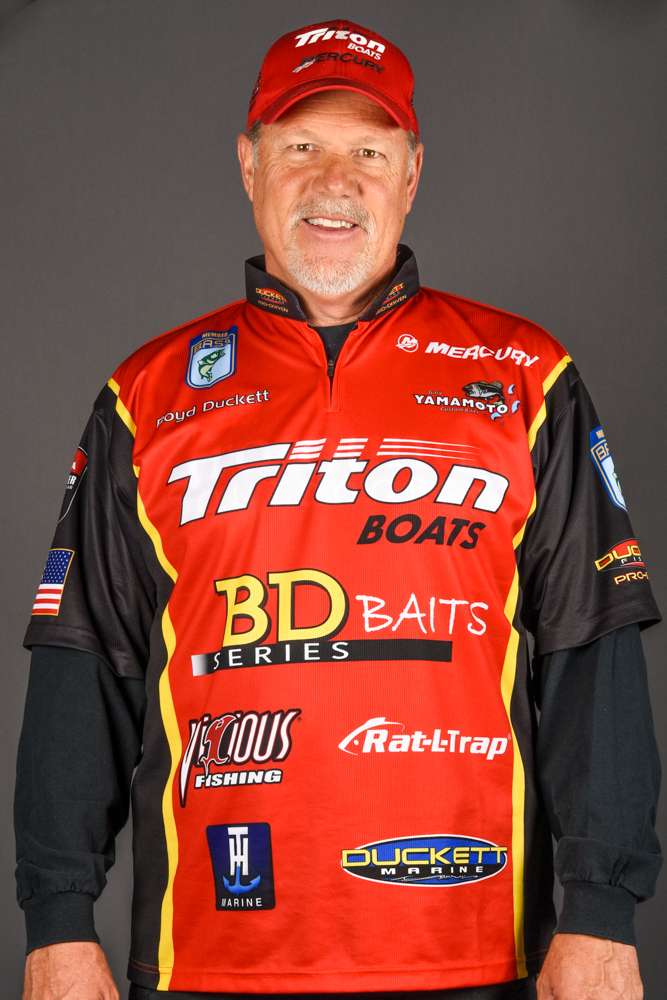
Last week I was filming a TV show with Aaron Martens on Lake Martin here in Alabama. The idea was to catch spotted bass on topwater plugs back in the creeks. It's a traditional fall pattern on Martin and about as reliable as a fishing pattern can get.
Mother Nature had other ideas, however. The weather suddenly turned cold — lows in the teens, highs in the upper 20s and a fierce wind to match. It was miserable. And, to make matters worse, they were pulling the water down hard and fast. I knew we would have to do something different.
Normally when the area is hit by a sudden cold front, the baitfish move out into 8 or 10 feet of water and the spots school a couple of feet below them. Spots will savagely attack a tailspinner under those conditions. Not this time, however. I couldn't find any baitfish shallower than 40 feet, and even they didn't have any bass around them.
I immediately switched to another standard backup pattern on Martin — channels. Once again, there was nothing to be found, no baitfish and no bass. If they weren't holding in their usual places, I figured they'd be under deep boat docks in 12 to 15 feet of water. That's normally their refuge of last resort. Well, I figured wrong.
Now this was starting to get serious. Lake Martin was looking and fishing like the Dead Sea. I mean, it's bad enough to let the bass beat you, but on television in front of your friends is nothing short of humiliating. Something had to be done and done quickly.
Out of desperation — and I do mean desperation — I decided to throw a shaky head at a boat dock sitting in about three feet of water. I knew it was a waste of time. No self-respecting bass would hold shallow under these conditions. And, for sure, no self-respecting professional bass angler would look for them in such a place. Still, I was running out of options.
Of course, you know the rest of the story. I caught a good one on my first cast. Aaron and I continued to fish shallow boat docks the rest of that day and all the next day with unbelievable success. At one point I caught nine bass on nine casts. We made an extraordinary television show.
Both the pattern and the technique were simple and straightforward. Find a dock in shallow, clear water and skip a homemade 1/8-ounce shaky head with a 6-inch multilayered, multicolored hand-poured Berkley Powerbait Finesse Worm to them. They hit it on almost every cast at a dozen different boat docks over two days.
It was crazy. The fish weren't doing anything they should be doing. They were holding back under the docks in the shade under miserable conditions while, at the same time, they hit aggressively if you dropped it on their nose. Obviously, they didn't know they were spotted bass and weren't supposed to act that way under the prevailing conditions.
And, even stranger, we never saw one unless we hooked it. When's the last time you caught a spot from a school and several others didn't follow it to the boat?
Now, I try to learn something about bass fishing every time I go. This trip was no different. The lesson I learned was to keep fishing when conditions get tough. But don't just mindlessly fish — fish stupid in a smart way.
Anyone who's anyone would know better than to look for spots shallow under boat docks given the conditions. That would be stupid. But it would be even stupider — that may not be the right word but it's the right concept — to keep fishing where there are no bass. I don't care how good you are, you can't catch them if they aren't there.
Change locations and patterns until you find fish. Just because you think the bass shouldn't be doing something doesn't mean they think they shouldn't be doing it.





